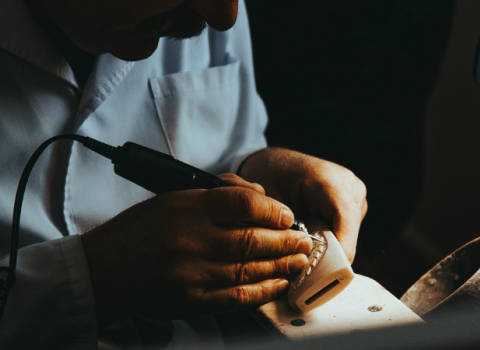SESAME, the pioneering new regional laboratory for the Middle East and neighbouring countries, today publicly announced its first call for proposals for experiments. A third generation light source with a research capacity ranging from medicine to cultural heritage, SESAME’s first beams will be circulating this autumn, with the experimental programme getting under way in 2017. SESAME is already host to a growing user community of some 300 scientists from across the region and, as is standard in the light source community, is open to proposals for good science, wherever they may come from.
“This is a very big moment for SESAME,” said Dr Khaled Toukan, SESAME’s Director General. “It signals the start of the research programme at the first international synchrotron research facility in our region.”
“I am a string physicist, we study potential parallel universes,” said Eliezer Rabinovici, Professor at the Hebrew University of Jerusalem and former Vice-President of the SESAME Council. “At Sesame I can actually be in such a parallel universe, one where scientists of the region work together for the benefit of humanity and the benefit of their own people.”
SESAME is a unique intergovernmental venture created bottom-up by scientists from its Members: Bahrain, Cyprus, Egypt, Iran, Israel, Jordan, Pakistan, the Palestinian Authority and Turkey. It will foster dialogue and better understanding between scientists of all ages with diverse cultural, political and religious backgrounds, who will work side-by-side at SESAME. Strong links already exist between SESAME and light sources around the world, which have supported SESAME’s growing user community as the laboratory has been taking shape.
SESAME will start up with two beam lines, one delivering infrared light, the other X-rays. The laboratory’s full scientific programme will span fields ranging from medicine and biology, through materials science, physics and chemistry to healthcare, the environment, agriculture and archaeology.
“It has been a real thrill over recent months to see the SESAME main ring being installed,” said Gihan Kamel, SESAME’s infrared beam line scientist. “The infra red beam line is also ready for installation.”
SESAME’s maintenance and operation are financed by its Members. Capital investment has come from special contributions from three Members: Israel, Jordan and Turkey, who will be joined by Iran now that sanctions have been lifted. The European Commission financed the design and construction of key components, the main-ring magnets and power supplies, through a project coordinated by CERN. Italy provided the main-ring accelerating structures. Various other countries have made contributions, including Germany, which donated the BESSY1 synchrotron, which has now been converted into the injector for the SESAME main ring.
“Europe has made a very important contribution to SESAME,” said Chris Llewellyn-Smith, President of the SESAME Council, “helping to build scientific and technical capacity through training and knowledge transfer through the main-ring project.”
Proposals for SESAME’s opening call may be submitted through the SESAME website from August 2016. They will be examined by the SESAME Proposal Review Committee, which will recommend SESAME’s opening research programme to the SESAME Directorate.





 A unique international forum for public research organisations and companies to connect their external engagement with strategic interests around their R&D system.
A unique international forum for public research organisations and companies to connect their external engagement with strategic interests around their R&D system.